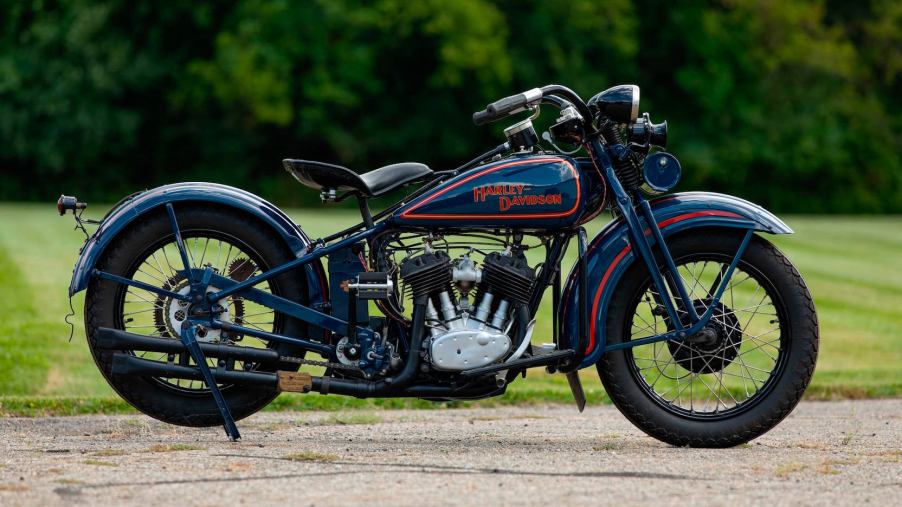
This Obscure Harley-Davidson Model Single-Handedly Saved Brand From the Great Depression
Harley-Davidson is arguably the most recognizable American motorcycle brand that will ever exist. However, the orange and black bikers almost didn’t survive the Great Depression. If it weren’t for the pre-war Harley-Davidson Model D, Indian motorcycles might have taken over the American motorcycle market.

Long live Harley-Davidson
The Great Depression killed many companies in American during the late ‘20s through the mid-’30s. Thankfully Harley-Davidson wasn’t one of them, but they nearly were.
According to Silodrome, during the ‘20s, pre-war Harley-Davidson and Indian Motorcycles were battling for the prize of being THE American Motorcycle manufacturer. They were trading wins in nearly every motorcycle racing event imaginable. Unfortunately for Harley, the Indian 101 Scout was the finest motorcycle of its day.
Harley-Davidson quickly answered Indian’s 45ci wonder bike with the absolutely stunning Harley-Davidson Model D in 1929. The key to the 101 Scout was the bike’s lightness and agility. So, the Model D’s designer, Arthur Constantine, crammed the 45ci Flathead V-twin into an existing single-cylinder frame to save on weight and size.
1929 Harley-Davidson Model D specs

This flathead V-twin started with 15 hp and eventually crawled up to 20 hp by increasing the compression ratio. All these ponies were sent to the rear wheel through a three-speed tank shifter and chain final drive.
Harley-Davidson wanted to set the Model D apart from the heard, so it gave the Model D a weirdly modern twin set of “bullet-style” headlights. Harley also gave it a vertical generator earning it its name of the “three-cylinder Harley.”
How did the Model D save Harley-Davidson from the Great Depression?

While many believe the Indian 101 Scout to be one of the finest motorcycles ever made, there were nicer, bigger displacement, and more expensive motorcycles at the time, like Vincents, for instance. However, these bikes would be the downfall of many companies during the Depression becuase no one could afford them.
The Harley-Davidson Model D was made to be lightweight and simple to compete with the 101 Scout. This had simplicity also came with a friendly price of $290, which, at the time, was around $4,650 in today’s value. This cheaper price kept these bikes in play for some Americans while the Depression ragged on.
This simplicity and lightweight design had a second benefit, the military. As America joins in WWII, the Great Depression begins to wane under the manufacturing boons of the war. Harley-Davidson was tapped for creating the American war bike, and the WLA was born.
This now-iconic piece of design was/is heavily connected to the Model D. Military vehicles rely on simplicity and toughness to provide reliable transportation to soldiers, and the Model D has the bones for such a vehicle.
Thank you, Model D
As we now know, the second World War, dig far too many graves; it also dug America out of its biggest financial crisis to date. All of that production and manufacturing of the WLA gave Harley-Davidson new life and brand awareness, ultimately leading to its domination of the American motorcycle industry.
The pre-war Harley-Davidson Model D seen here is a beautiful example from 1930 heading to the Mecum auction in early January. If you want to earn a piece of Harley-Davidson history, scoot over to the site and check it out.



